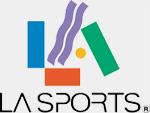
The Los Angeles Sports Council and the Los Angeles Area Chamber of Commerce announced the findings of their latest field study measuring the yearly economic impact of the sporting events industry in the Greater Los Angeles area.
The full study can be found in a downloadable format at this link.
Significant findings of the report include:
-
In 2012, the sporting events industry in Greater Los Angeles generated $4.1 billion in overall economic impact for the region.
-
Approximately 18.5 million people attended area sports events last year.
-
Full-time employment in the industry exceeded pre-recession levels in 2012, rising a surprising 27% in comparison to the previous study conducted in 2009 (3,938 jobs versus 3,103).
-
In a related finding, in 2012, 82% of the available tickets to all major league team sporting events in the region -- baseball, basketball, hockey, soccer -- were sold.
The extensive three-month study, co-sponsored by the Sports Council and the Chamber, was conducted by a four-person team of MBA graduate students from the UCLA Anderson School of Management.
Using data obtained confidentially from 50 local sports organizations (the survey excludes high school sports and certain special one-time events) the study compiled and evaluated aggregate annual revenue, employment, and attendance figures for the calendar year 2012.
“The sports industry stimulates economic development, contributes to workforce development and enhances the sense of community. This study validates a fact that we already know to be true … L.A. is a great sports town and will continue to be one,” said Alan Rothenberg, chairman of both the Sports Council and the Chamber.
This the first study in three years and the eighth overall in a series dating back to 1993. It is the most comprehensive of its kind for the Los Angeles region.
The survey included professional franchises, sports venues, horse racing tracks, major colleges and universities, as well as annual recurring events such as the L.A. Marathon, the Long Beach Grand Prix and the Rose Bowl Game.
According to the results, sports pumped $1.7 billion directly into the local economy last year, which, after factoring in the customary economic multiplier provided by a federal government agency, translates into an overall gross economic impact of $4.1 billion. The weighted multiplier of 2.47 was derived from data from the Bureau of Economic Analysis (BEA) and was used to quantify the ripple effect that consumer spending within the sporting events industry has on the overall regional economy.
Other findings of the survey were:
-
The direct revenue total ($1.7 billion) is at the exact same level as three years ago when the last study was completed, but is 19% below the pre-recession peak of $2.1 billion in 2007.
-
Consistent with previous studies, L.A. County accounted for roughly 71% of the total revenue generated, while Orange County’s share of sports-generated revenue was 25% in 2012.
-
Based on media reports, the four highest paid attendances at single-day sporting events in 2012 were the USC vs. Notre Dame football game played at the Coliseum (93,607), the Rose Bowl Game (91,245), the Auto Club 400 at the Auto Club Speedway (90,000), and the UCLA-USC football game played at the Rose Bowl (83,277).
Due to its conservative nature, the study examined only the sporting events industry and does not attempt to capture sports-driven revenues from visitors’ travel expenditures (i.e. hotels, restaurants, car rental), retail merchandising, secondary ticket sales or manufacturing of licensed merchandise. Also not reflected in the study are hundreds of millions of dollars in recent capital expenditures as part of extensive renovations to Dodger Stadium and UCLA’s Pauley Pavilion, as well as the cost of construction of the new McKay Center on the USC campus, among others.
The results also showed that total attendance has declined since the previous study (18.5 million from 20.8 million). Possible reasons for the decline cited by the Anderson School were a still struggling economy, rising ticket prices, and improvements in the home viewing experience for many fans.
“Despite the dip in attendance figures, our 18 professional teams sold 82% of all available tickets to events in 2012,” said Sports Council President David Simon. “I can’t think of many other cities in the country that sell that high a percentage of tickets.”
“Last year was exciting for L.A. sports fans with both the Kings and Galaxy bringing home championships. Our professional and college teams and our large-scale annual sporting events continuously serve as a source of pride for this community while contributing to the local economy,” said Gary Toebben, president & CEO, L.A. Area Chamber.
The Los Angeles Sports Council is a non-profit civic organization whose primary purpose is to promote economic development through sports in the Los Angeles/Orange County area. For more information, visit www.lasports.org.
The Los Angeles Area Chamber of Commerce represents the interests of business in L.A. County. Founded in 1888, the Chamber promotes a prosperous economy and quality of life in the Los Angeles region. For more information, visit www.lachamber.com.

There are no comments
Please login to post comments